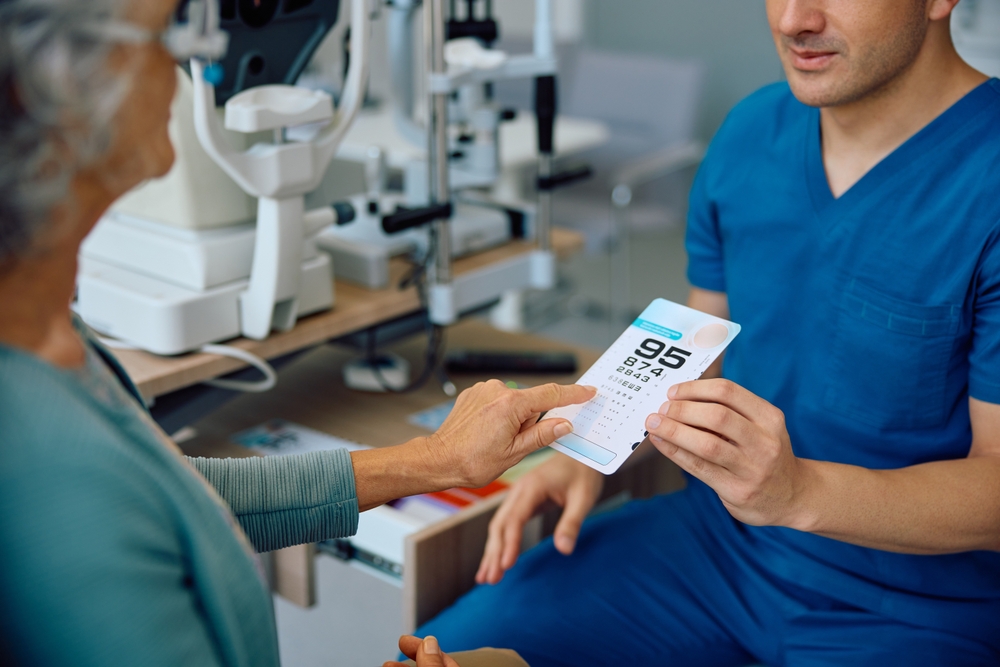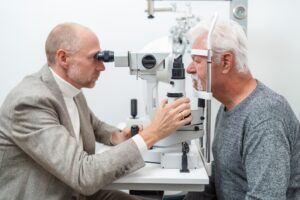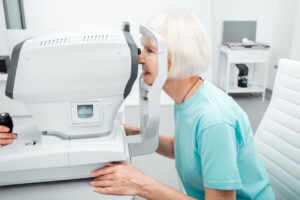
Your vision is one of your most precious senses, allowing you to navigate the world and experience life’s beautiful moments. To maintain healthy eyes and clear vision, regular eye exams are essential.
Many people may feel anxious or unsure about what to expect when visiting an eye doctor. Understanding ahead of time what to expect can help ease your fears and encourage you to get your eyes checked regularly.
Keep reading to learn what happens during a routine eye exam!
Why is a Routine Eye Exam Important?

There are two main reasons why it’s vital to get routine eye exams. The first is that eye exams help detect eye diseases early.
Many eye health issues can remain undetected until significant vision damage has occurred, as they often present with minimal or no symptoms in their early stages. During a comprehensive eye examination, your eye doctor will carefully assess the various structures of your eyes to identify any potential eye conditions in their earliest stages, when they are most treatable.
Another crucial aspect of regular eye exams is the thorough evaluation of your visual acuity and overall vision quality. Routine eye exams are important for making sure your glasses or contacts are correcting your vision to its fullest potential.
The Steps of an Eye Exam
From the moment you sit in the examination chair, your eye doctor will guide you through a series of tests and assessments. Each step serves a specific purpose in determining the clarity of your vision, the health of your eyes, and whether you need an a prescription for glasses or contacts.
Step 1: Take Patient History
The first step of an eye exam involves a conversation with your eye doctor about your current eye health and vision concerns. This is an opportunity for you to discuss any problems you’ve been experiencing, such as blurry vision, eye strain, or headaches.
Your eye doctor will also ask you about your overall medical history and any medications you’re currently taking, as certain health conditions and treatments can impact your eye health.
Step 2: Baseline Assessments

During this part of the eye exam, your eye doctor will test your peripheral vision to ensure you have a full field of view without any blind spots. Additionally, your eye doctor may administer a color vision test to screen for color blindness, a condition that affects your ability to distinguish between certain colors.
They will also test your eye’s alignment to ensure they are working together and moving together appropriately.
Step 3: Visual Acuity
The visual acuity test is a critical component of your eye exam, as it measures the sharpness and clarity of your vision. During this step, you’ll be asked to read letters or numbers from a chart placed at a specific distance, usually twenty feet away, or using a special mirror.
Your eye doctor will assess each eye individually, determining your ability to see clearly at various distances.
Step 4: Tests for Refractive Errors
After assessing your visual acuity, your eye doctor will perform additional tests to determine if you might have a refractive error. These tests may include retinoscopy, where the doctor shines a light into your eyes and observes the reflection of your retina, or autorefraction, which uses a computerized machine to measure how light bends as it passes through your eye.
Your doctor may also use a phoropter, a device containing various lenses, to fine-tune your prescription by asking you to compare the clarity of different lens combinations. The results of these tests will help your eye doctor determine the most accurate prescription for correcting your vision with glasses or contact lenses.
Step 5: Evaluating Eye Health & Additional Testing
Lastly, your ophthalmologist will use a slit lamp, which is a special microscope with a bright light, to look at the various parts of your eyes. The light allows them to see the many different tiny structures of your eyes and assess the general health of your eye.
This part of the exam also often includes dilation, which enlarges your pupil so your eye doctor can get a good look at the back of your eye.
How Often Do I Need an Eye Exam?

Many people also wonder how often they need an eye exam. This answer varies depending on your age, vision, and eye health.
But, the general guidelines are as follows depending on age:
- Adults 18-39: At least once every two years
- Adults 40-64: At least once a year
- Adults 65 and older: Once a year or more
Children also need regular eye exams to ensure healthy eyes and vision. The guidelines for children are as follows:
- Newborn to 2 years old: At least one eye exam between the ages of 6-12 months
- Ages 3 to 5: At least one eye exam between these ages
- Ages 6 to 17: An eye exam before first grade and once a year after that
Remember that these are general guidelines. If you wear glasses or contacts, you may need to see your eye doctor more often to adjust your prescription.
Also, if you have certain eye conditions or medical issues, such as diabetes, you will likely need more frequent eye exams.
Request an Eye Exam Today
Have you noticed recent vision changes or problems with your eyes? Has it been a while since you’ve had an eye exam?
If so, now is a great time to make an appointment for a routine eye exam at Hayden Vision. We will make sure you feel comfortable and listen to your vision concerns.
Is it time for you to have an eye exam? Schedule an appointment at Hayden Vision in Evansville, IN, today!
